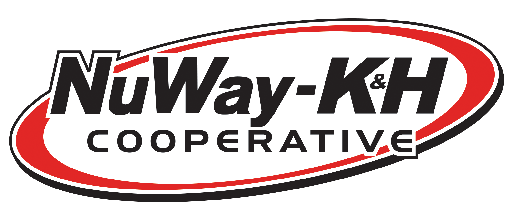Brad Henning, Seed director
Brad.Henning@NuWay-KandH.com
Protect and optimize your soybean yield by treating your soybean seed with NKH Emerge F/N.
Last fall, NuWay-K&H Cooperative introduced NKH Emerge F/N —our own private label soybean treatment package. This package, which contains both fungicides and soybean inoculant, is designed for growing beans in our area of the country.
NKH Emerge F/N contains three high-performing fungicides: fludioxonil, sedaxane, and mefenoxam. It also includes a soybean inoculant that contains twice the number of rhizobia per seed, compared to similar products.
Why talk about soybean seed treatment? Well, early planted soybeans is becoming more common in the area. In some cases, you are planting soybeans prior to corn or at the same time—trying to increase your soybean yields. But shifting to early planted soybeans also brings the potential for increase of fungal pathogen infections. Soil conditions that are cooler and damper attract pythium, phytophthora and rhizoctonia.
Mefenoxam brings protection against pythium and phytophthora, fludioxonil is very effective in controlling rhizoctonia and fusarium, and sedaxane brings in another layer of rhizoctonia protection. These three active ingredients in Emerge will provide sound protection against the three most destructive fungal infections at any planting time. Remember: you cannot control mother nature.
The other main component of NKH Emerge F/N is the soybean inoculant, a nitrogen-fixing bacteria known as Bradyrhizobia japonicum. Bradyrhizobia is a living bacteria within the soil and is important to the soybean plant because it is responsible for the formation of nodules on the roots. These nodules take atmospheric nitrogen and convert it to nitrate which soybeans can utilize. A 70-bu. per acre soybean crop will require 343 pounds of nitrogen. The majority of this nitrogen comes from these nodules.
Last year, we saw many fields with standing water and drowned-out spots. That standing water created an anaerobic environment within the soil profile, meaning there was no oxygen. Bradyrhizobia is a living organism that needs oxygen to survive. This spring, the number of bacteria in these drowned out spots will be compromised, and the only way to replenish the Bradyrhizobia in the soil is to inoculate your soybeans.
Other field conditions or management practices that inhibit Bradyrhizobia are corn-on-corn rotations going back to soybeans and fields that have a pH below 6.5 or greater than 8.0. Significant drought also has a negative impact on Bradyrhizobia populations. Many area fields fall into these categories as well.
Talk to your NuWay-K&H Agronomy Account Manager to book NKH Emerge F/N for your soybean treatment needs this spring.

